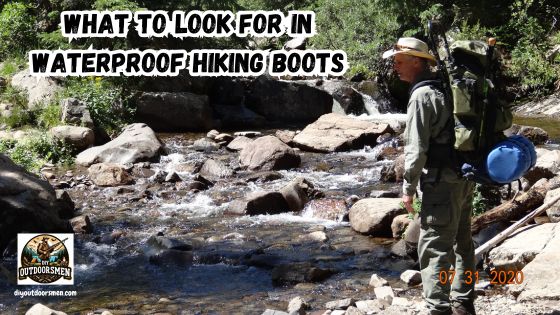Contents
- 1 Why Waterproof Hiking Boots Matter in Wet Conditions
- 2 What Makes a Hiking Boot Waterproof?
- 3 Top Recommended Waterproof Hiking Boots
- 4 How to Choose the Right Fit for Comfort and Support
- 5 Waterproofing and Breathability: Finding the Balance
- 6 Traction and Durability for Wet Trails
- 7 Choosing Boots for Different Terrain and Weather
- 8 Extra Features Worth Considering
- 9 Real-World Uses for Waterproof Hiking Boots
- 10 Frequently Asked Questions About Waterproof Hiking Boots
- 11 How to Get the Most Out of Your Waterproof Hiking Boots
Exploring wet trails with the wrong footwear can easily leave you with soggy socks and sore feet, which is why picking the right waterproof hiking boots makes such a big difference. Boots made for wet conditions help keep you comfortable whether you’re tackling muddy mountain paths, rain-soaked forests, or tricky stream crossings. I put together this guide based on years of hiking in all kinds of weather, so you can feel more confident choosing your next pair of boots.
QUICK LOOK: Key Features of Waterproof Hiking Boots
- Waterproof Membranes: Materials like Gore-Tex stop outside water but let sweat vapor escape, keeping feet dry inside and out.
- Sealed Seams: Seams are taped or welded in the best boots, stopping leaks at the stitching.
- Gusseted Tongue: The tongue is connected to the boot higher up, closing off gaps and blocking both water and dirt.
- Durable Uppers: Leather or quality synthetic uppers are common. Full-grain leather brings toughness, while synthetics usually dry faster if they get wet.
Why Waterproof Hiking Boots Matter in Wet Conditions
Dealing with consistently wet ground or sudden storms is part of hiking for many people. Getting your feet soaked on the trail isn’t just uncomfortable. It can also cause blisters, cold feet, and even increase the risk of slips or accidents. I’ve found that a good pair of waterproof boots helps keep my feet dry and warm, letting me focus on the hike instead of worrying about what’s squishing in my shoes.
The popularity of waterproof boots has grown steadily, especially in regions where rain and mud are common. Outdoor brands now provide a wide range of options, making it easier than ever to find boots that fit your specific needs and hiking environment.
For anyone walking through streams, heading out after heavy rain, or trekking in damp climates, investing in waterproof boots is one of the best ways to stay comfortable and injury-free. Not only do these boots protect your feet from excess moisture, but they also add a layer of defense from chilly gusts and unexpected puddles, so your outdoor adventure is enjoyable from start to finish.
What Makes a Hiking Boot Waterproof?
Not all boots keep water out equally well. The main things that make a boot waterproof are the materials and the way they’re made. Most waterproof hiking boots use a membrane such as Gore-Tex or eVent, which allows sweat vapor to escape while keeping rain and puddles out. The most reliable models have sealed seams and a gusseted tongue, which makes it much harder for water to sneak in above the laces.
- Waterproof Membranes: Materials like Gore-Tex stop outside water but let sweat vapor escape, keeping feet dry inside and out.
- Sealed Seams: Seams are taped or welded in the best boots, stopping leaks at the stitching.
- Gusseted Tongue: The tongue is connected to the boot higher up, closing off gaps and blocking both water and dirt.
- Durable Uppers: Leather or quality synthetic uppers are common. Full-grain leather brings toughness, while synthetics usually dry faster if they get wet.
Besides these, I like to check if the boots have extra protective layers, like a rubber toe bumper. This gives you a buffer against abrasion and further slows down water entry in extra-wet settings. Some brands are now experimenting with eco-friendly membranes that perform as well as classic options, giving environmentally conscious hikers more choices without giving up on protection.
Top Recommended Waterproof Hiking Boots
For waterproof hiking boots, consider the Salomon X Ultra 4 Mid GTX or the Merrell Moab 3 Mid GTX, both highly recommended for their waterproof membranes and overall performance. Other excellent options include the Hoka Anacapa 2 Mid GTX, Salomon Quest 4 GTX, and Asolo Fugitive GTX.
Here’s a more detailed look at some of the Top Waterproof Hiking Boots:
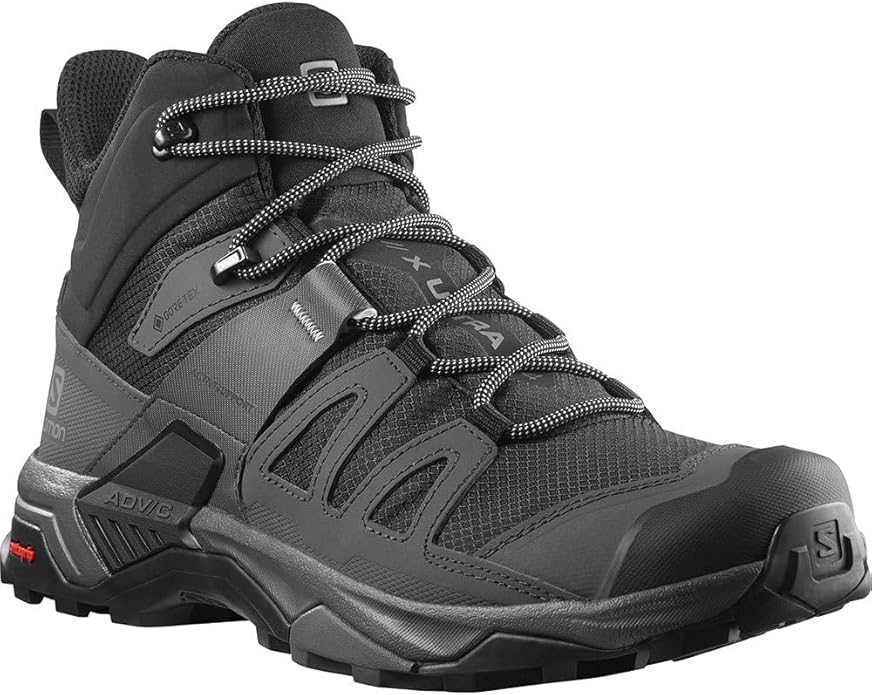
Salomon X Ultra 4 Mid GTX:
Known for their versatility, grip, and excellent waterproof protection.
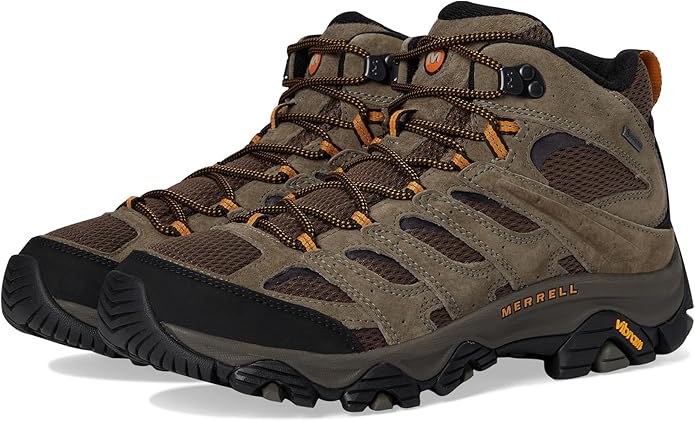
Merrell Moab 3 Mid GTX:
A popular choice for its comfort, durability, and reliable waterproof membrane.
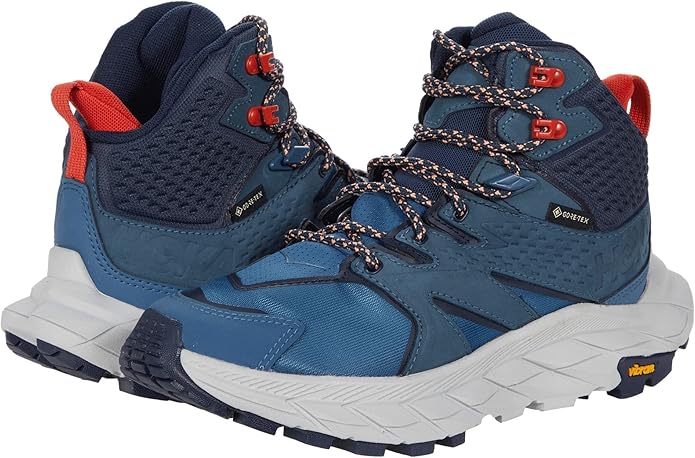
Hoka Anacapa 2 Mid GTX:
A great option for those who prioritize comfort and cushioning while still needing waterproof protection.

Salomon Quest 4 GTX:
A robust boot designed for backpacking and challenging terrains, with excellent waterproofing.
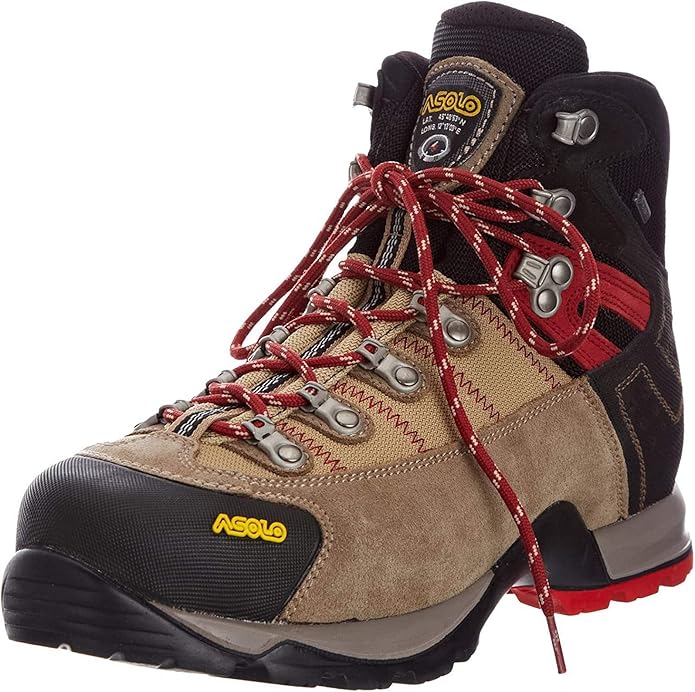
Asolo Fugitive GTX:
A durable and supportive boot with excellent waterproofing, suitable for various terrains.
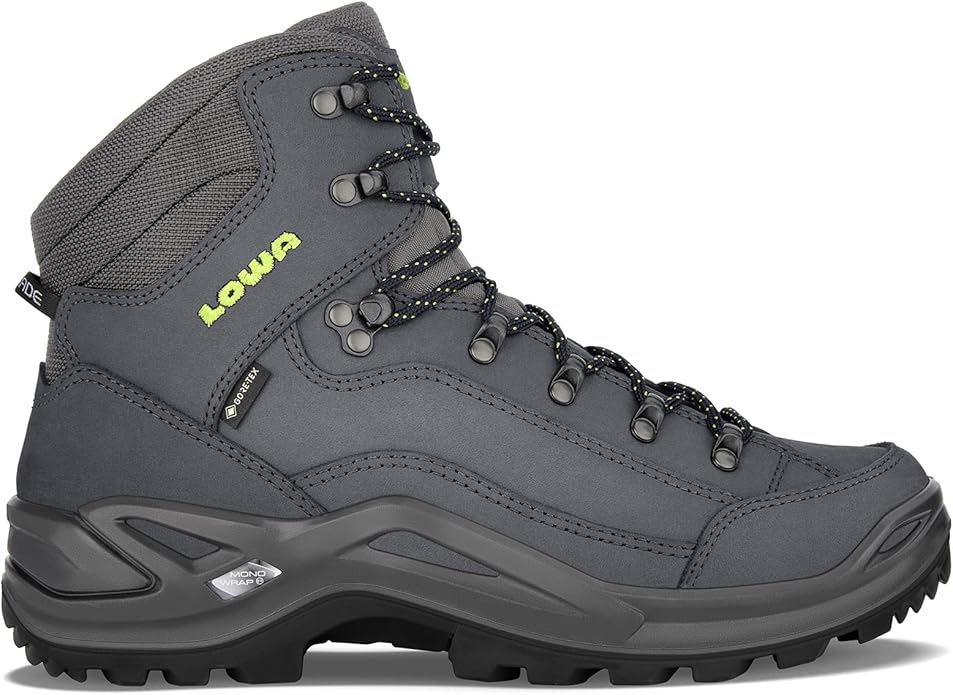
Lowa Renegade GTX Mid:
A well-regarded German brand known for its quality, with excellent waterproofing and ankle support.
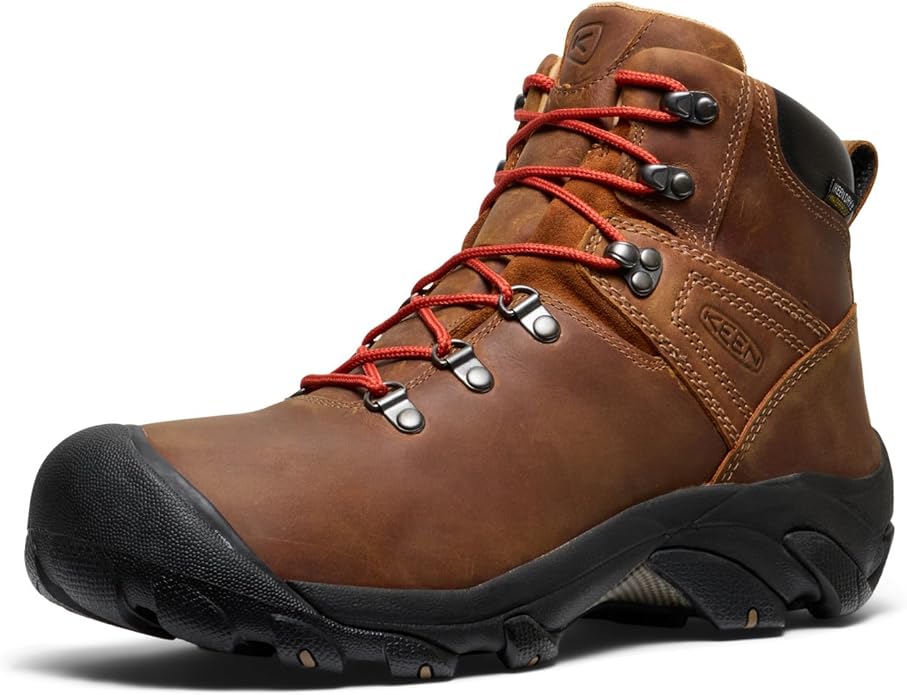
KEEN Pyrenees:
A good option if you prefer leather boots.

La Sportiva Nucleo High II GTX:
A lightweight, waterproof boot with great ankle support and traction.
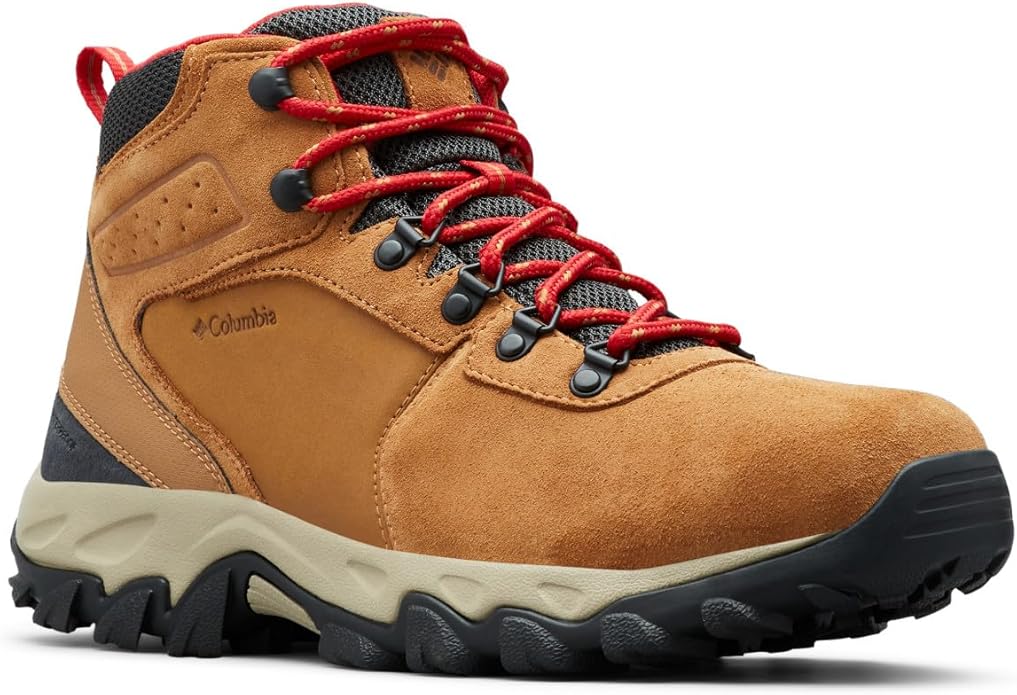
Columbia Newton Ridge Plus II Waterproof:
A budget-friendly option that offers reliable waterproof protection.
Factors to Consider When Choosing Waterproof Hiking Boots:
- Terrain: Consider the type of terrain you’ll be hiking on. Some boots are better suited for rocky trails, while others are better for muddy or snowy conditions.
- Weather Conditions: If you hike in very wet conditions, prioritize excellent waterproofing over breathability.
- Ankle Support: If you need extra ankle support, look for boots with a higher ankle cut.
- Comfort: Make sure you’re comfortable in the boots, as you’ll be wearing them for extended periods.
- Weight: If you’re backpacking, you’ll want to choose a lightweight boot.
How to Choose the Right Fit for Comfort and Support
A proper fit is extremely important, especially for long hikes in wet conditions. I look for boots that fit snugly around my heel and midfoot but have enough wiggle room for my toes to move. Trying boots later in the day, when my feet are a bit swollen, gives me a real idea of how they’ll feel on the trail. It’s also smart to use your normal hiking socks during the fitting, since thicker socks can affect the fit and overall comfort.
If you have foot issues, like flat arches or bunions, finding boots that include extra support or a wide toe box can help. Good insoles work if the original footbed doesn’t offer enough cushioning. Breaking in new boots at home or on short walks is something I never skip, as it helps avoid blisters and sore spots on longer adventures.
- Snug but Not Tight: Your feet should feel secure, but your toes should be able to wiggle and stay comfy on long days out.
- Test Indoors: Walk around your house and check for pinching or spots that rub, so you can catch issues before hitting the trail.
- Cushioning and Arch Support: Seek boots with quality insoles and solid arch support; this makes a world of difference on longer hikes.
Waterproofing and Breathability: Finding the Balance
A common concern with waterproof boots is breathability. It’s great to keep rain out, but sweaty feet can be almost as uncomfortable as wet ones. I choose boots that mix solid waterproof membranes with breathable mesh panels and moisture-wicking linings. This way, sweat vapor escapes and feet stay drier and fresher, cutting down on odor, too.
Remember, no boot is totally immune to getting soaked in extreme conditions. If my boots get wet inside, I pull out the insoles and let everything dry completely before my next hike. Carrying spare socks is always a good backup plan when the weather looks iffy. A few friends keep a small camp towel in their bag just for sock swaps at lunch breaks, which really helps on long, wet hikes.
- Look for Breathable Linings: Boots with ventilation features or fabrics that wick sweat help you stay dry from the inside as well as outside.
- Gusseted Tongue: This design stops water and debris from creeping in, so you won’t be stopping as often to clear out your boots.
Traction and Durability for Wet Trails
Traction matters when you’re walking through messy mud, crossing slick rocks, or hiking in leftover snow. Deep lugs — those chunky treads on the outsole — help your boots grip the ground better.
Soles with tread patterns around 4mm deep dig into soft or loose dirt nicely, making uphill and downhill movements safer. The rubber compound is important too; look for outsoles that don’t get too hard or slippery when the temperature drops, as softer rubber offers better grip in the cold or wet.
Durability is a high priority too, especially if you’re planning multi-day trips or carrying a heavy pack. Features like beefy toe caps and reinforced heels prevent excess wear in the spots that take the most abuse. For folks who love bushwhacking or off-trail hikes, these little touches add months or years to a boot’s life.
- Deep Lugs: Outsoles with 4mm (or deeper) treads grip well in mud and loose soil, helping prevent slips.
- Sturdy Outsoles: Thicker rubber lasts longer and keeps feet better cushioned from roots and rocks.
- Toe and Heel Guards: Protection at both ends keeps boots in better shape where scrapes and bangs are common.
Choosing Boots for Different Terrain and Weather
Not every waterproof boot works equally well everywhere. I always match the boots I wear to the environment. For summer hiking on smooth, dry trails, lightweight waterproof boots are enough. If I know I’ll be climbing on rocks or hiking in snow and ice, I pick stiffer, higher-cut boots that protect my ankles and can handle a heavy backpack, giving me confidence with every step.
- Rocky Terrain: Look for boots with stiff midsoles for extra support and to shield your feet from sharp stones.
- Muddy, Wet Trails: Aggressive lug patterns and a reliable waterproof lining work best here to keep you steady and dry.
- Slick or Icy Conditions: Choose boots with sticky rubber and micro-lugs. Some hikers even use boots compatible with mini crampons for added safety on particularly icy paths.
Think about your most frequent hiking destinations. There’s no need for heavy-duty alpine boots on weekend walks around a local forest, but if your adventures take you to rugged, remote locations, investing in more protective and supportive boots is worthwhile. Always double-check weather and trail reports before you go, and make sure your boots are ready to handle whatever you throw at them.
Extra Features Worth Considering
Certain features can make wet-weather hiking simpler. Waterproof gaiters stop water and dirt from sliding in at the top of your boots. Removable insoles dry faster and make cleaning after muddy treks way less hassle. Lacing systems should cinch the boots tight, locking your foot in place and ensuring comfort across changing terrain.
- Gaiter Hooks: Attach waterproof gaiters easily, blocking out water, dust, and debris that would otherwise slide into your boots.
- Removable Insoles: Pull out insoles for drying and cleaning, which extends their life.
- Easy Lacing Systems: Quickly adjust the fit throughout your hike, which really comes in handy during weather changes or when the trail switches from flat to uphill.
Some boots offer reflective details for safer early morning or evening hikes. Others have built-in drainage channels to help shed unexpected splashes quickly. Think about what matters most for your comfort, whether that’s faster drying, better traction, or a more adjustable fit.
Real-World Uses for Waterproof Hiking Boots
Hikers, backpackers, and even trail workers get real mileage out of waterproof boots. In my own Pacific Northwest outings, rain is nearly guaranteed after October. Waterproof boots keep me focused on stunning views, not on squishy socks. Friends who work outdoors, whether gardening or maintaining trails, love sturdy waterproof leather boots for day-in, day-out protection from mud, rain, and unexpected puddles.
- Multi-Day Backpacking: Keeping moisture out is vital when you’re carrying a heavy bag all day and can’t change into dry shoes at night.
- Spring and Fall Hikes: These are the muddiest times—boots that keep your feet dry prevent blisters and discomfort.
- Winter Wear: With thick socks, many waterproof boots double as snow boots in areas with moderate winters.
Whether for early morning dog walks across dew-soaked fields or month-long treks, having waterproof boots means getting outside in nearly any weather. Added peace of mind opens the door to more adventures year-round, turning miserable, damp hikes into some of my most memorable trail days.
Frequently Asked Questions About Waterproof Hiking Boots
How do I know if a boot is truly waterproof?
Look for details about a waterproof membrane (like Gore-Tex), taped seams, and water-repellent uppers in the boot description. Trusted brands highlight these features both on product tags and on their websites, so always double-check there before buying.
Can I make my old hiking boots waterproof?
You can apply waterproofing sprays or waxes, especially to leather boots, to help them resist rain better. While these treatments add some water resistance, they usually don’t perform as well as boots made with true waterproof membranes. Still, they’re a great way to get extra life out of a favorite pair for shorter or less intense walks.
Will waterproof boots leave my feet hot and sweaty?
Some waterproof boots can trap heat. Choosing breathable designs, pairing them with moisture-wicking socks, and giving your feet a breather during breaks keeps things more comfortable. Also, look for boots that specifically mention breathability in their description.
How should I care for waterproof hiking boots?
Clean boots after muddy walks using warm water and a soft brush. Let them dry at room temperature, never in direct heat, and use leather conditioner occasionally to keep leather supple and water resistant. Store them in a dry, cool spot for best results.
How to Get the Most Out of Your Waterproof Hiking Boots
Staying dry on the trail can be the difference between a great hiking trip and an uncomfortable one. By picking boots that fit well, have solid waterproofing, and match the conditions you’ll face, you can enjoy your time outdoors, whether it’s pouring rain or just a bit muddy.
A simple cleaning routine—rinsing off mud, drying them thoroughly, and occasionally conditioning leather—helps your waterproof hiking boots last longer and keep performing their best. With the right boots, you can set off for new adventures no matter what the forecast brings.
Most Recent Articles:
- Complete Guide On Tracking Game Animals
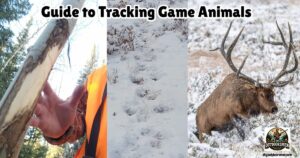
- DIY 4-Step Guide To Field Dressing And Quartering A Deer

- Night Vision Binoculars For Nocturnal Hunting

- The Science Behind Camouflage Patterns For Deer Hunting

- Binocular Accessories For Hunters

- 9 Tips for Using Trail Cameras To Track Deer Movements

As always, stay safe, enjoy the journey, and please try to leave it cleaner than you found it. If you have any comments, questions, ideas, or suggestions, please leave them in the comment section below, and I’ll get back to you ASAP. You can follow us on YouTube: Man Art Creations for videos of our DIY Adventures.
P.S. Thanks so much for checking out our blog; we really appreciate it. Just so you know, we may receive a commission if you click on some of the links that appear on our site. This helps us keep our content free and up-to-date for everyone. We appreciate your support!

